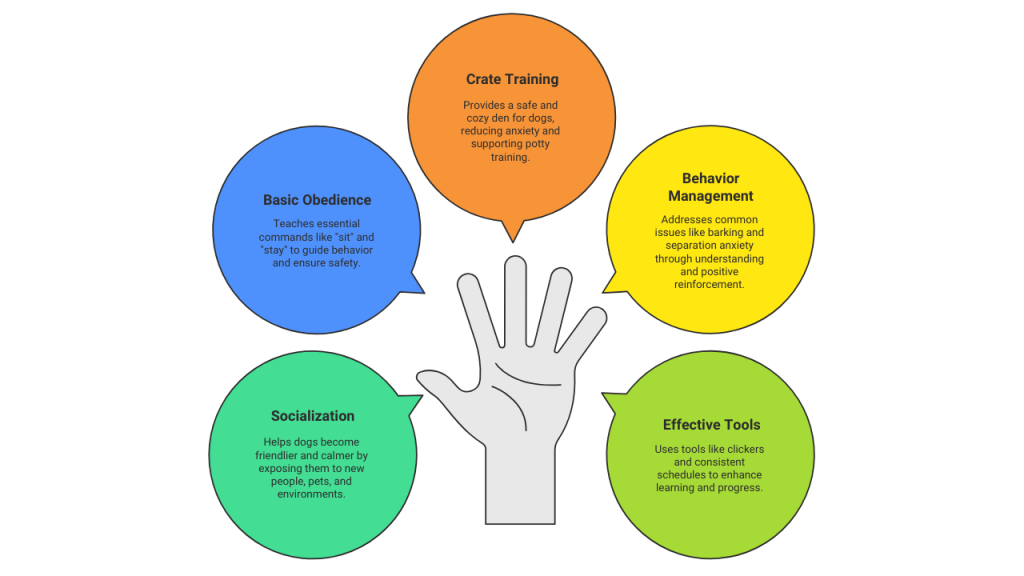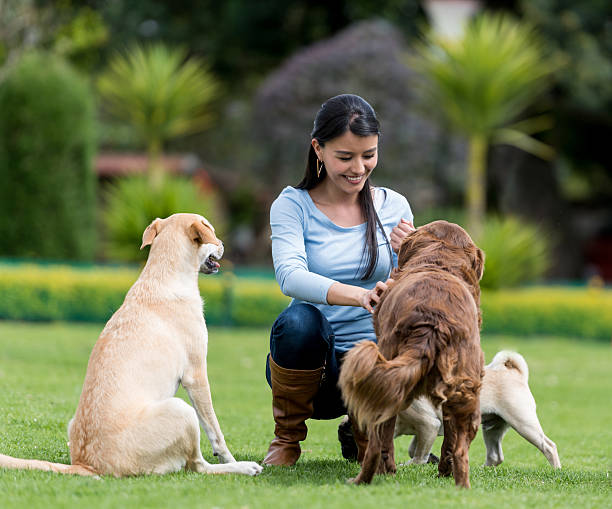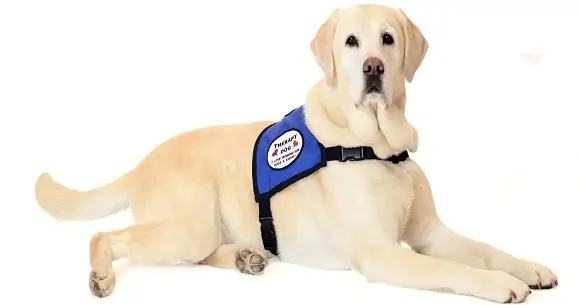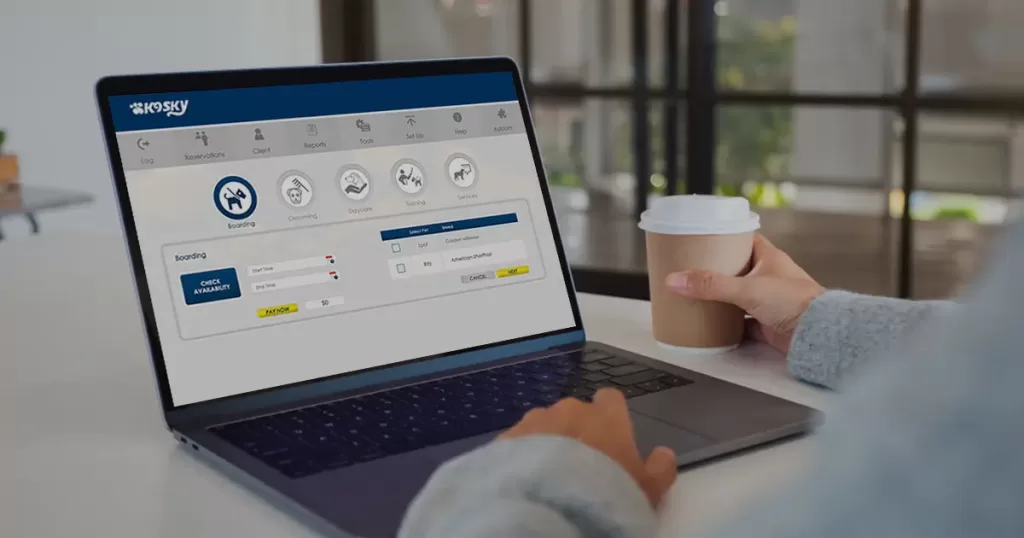Companion dogs bring joy, comfort, and loyalty to homes. They are more than pets they are family members who share daily life with their owners. To make the bond stronger, every companion dog needs the right training. Without training, even the sweetest dog can develop habits like barking too much, ignoring commands, or showing fear around new people. The good news is that dogs are fast learners when given patience, consistency, and love. In this guide, you will learn how to train companion dogs step by step so they grow into calm, loyal, and well-behaved pets
What Makes Companion Dogs Special
Companion dogs are different from working or guard dogs. Their primary purpose is to offer love and companionship. Families, singles, and even people with busy lifestyles choose because of their gentle nature. They provide emotional support, keep owners active, and make homes happier. But for these benefits to shine, training is necessary. Training teaches manners and builds trust between the dog and the owner. When a dog understands expectations, it feels safer and more confident. This is why learning how to train companion dogs is the foundation of raising a pet that truly fits into family life.
Emotional Benefits of Companion Dogs
Living with a companion dog brings comfort during stressful days. These pets reduce loneliness, provide unconditional love, and even improve mood. Many owners describe their dogs as part of their support system, always ready with a wagging tail and gentle presence.
Why Training Enhances Their Role
While companion dogs are naturally affectionate, training helps them express their best qualities. A well-trained dog can join family outings, greet guests politely, and adapt to new settings. Training makes it easier for owners to enjoy the emotional bond without the stress of behavior problems.
Step-by-Step Training Plan for Companion Dogs
Training a companion dog becomes much easier when broken into steps. Instead of rushing, focus on one stage at a time. This plan creates structure and helps your dog grow into a confident, well-behaved companion. Here are the key steps every owner should follow:

1: Socialization: The First Step
One of the most essential parts of training is socialization. Dogs that meet new people, pets, and environments early become friendlier and calmer. If you wonder how to socialize a dog, start by taking your dog on short walks in the neighborhood. Allow them to meet friendly dogs and greet people at a distance. If your dog is shy or nervous, go slowly. Owners who ask how to socialize a reactive dog should focus on controlled situations where the dog can observe without feeling threatened. Puppies need this even more. Learning how to socialize a puppy during the early weeks shapes their behavior for life. Socialization reduces fear, prevents aggression, and makes your dog more confident in public spaces.
2: Teaching Basic Obedience Commands
Once your dog is comfortable with people and surroundings, move on to basic obedience dog training. Start with simple commands like “sit,” “stay,” “come,” and “leave it.” These commands guide everyday behavior and keep dogs safe. For example, teaching “come” ensures your dog returns when off-leash in a safe space. Companion dogs thrive on structure, and obedience creates that structure. Short sessions of 10–15 minutes work best because dogs learn faster in small steps. Always use rewards such as treats, praise, or petting. This form of positive reinforcement dog training helps dogs repeat the behavior. Training sessions should feel like play, not punishment.
3: Crate Training for Comfort and Safety
Another key skill for companion dogs is crate training. Some owners worry about crating, but when used properly, a crate becomes a safe and cozy den for dogs. If you are looking for tips on kennel training, begin by slowly introducing the crate. Place soft bedding inside and open the door first so the dog can explore freely. Offer treats and toys to make it welcoming. Following puppy crate training tips for young pets such as keeping sessions short and avoiding punishment helps build comfort. Over time, dogs learn that the crate is their safe spot for resting and relaxation. Crate training also supports potty training and reduces anxiety when the owner is away.
4: Handling Common Behavior Problems
Even the best companion dogs can face challenges. One of the biggest concerns for pet owners is barking. Many people search how to stop a dog from barking, and the solution usually lies in identifying the cause. Dogs bark out of boredom, excitement, fear, or to alert. Training them to respond to a “quiet” command works well when combined with positive rewards. Another issue is separation anxiety, which makes dogs nervous when left alone. Using strategies like gradual alone-time training and comforting items can ease stress. Understanding dog body language is also crucial. A wagging tail, pinned ears, or lowered body all give clues to how a dog feels. By noticing these signs, owners can prevent bigger problems and find dog behavior problems and solutions before habits become difficult to change.
5: Using Training Tools Effectively
Modern dog training is easier with the right tools. One popular method is clicker training for dogs, which uses a small clicking sound to mark correct behavior. Each click is followed by a reward, making learning clear and fast. This tool is especially useful for teaching new tricks or refining obedience. Beyond tools, consistency is what matters most. Setting up a companion dog training schedule ensures steady progress. For example, daily 10-minute sessions in the morning and evening can make a huge difference. Dogs thrive on routine, so keeping training at the same times helps them understand expectations and learn faster.
Below Are 5 Essential Steps to Train Companion Dogs
Training works best when owners follow a structured approach. Each step focuses on building confidence, discipline, and trust. The table below highlights the main training stages and what makes each of them effective.
| Training Step | What It Focuses On | Key Benefit for Dogs |
| Socialization: The First Step | Meeting people, pets, and environments gradually | Builds confidence, prevents fear and aggression |
| Teaching Basic Obedience | Learning commands like sit, stay, come, and leave it | Creates structure and keeps dogs safe |
| Crate Training | Introducing the crate as a safe, cozy space with treats, toys, and bedding | Provides comfort, helps potty training, reduces anxiety |
| Handling Behavior Problems | Managing barking, separation anxiety, and stress with positive reinforcement | Solves issues early and builds better behavior |
| Using Training Tools Effectively | Clicker training, consistent schedules, and short daily sessions | Makes learning faster and ensures steady progress |
How Kennel Software Supports Dog Training

Training a companion dog requires patience and organization. This is where technology can help. Many pet owners and pet professionals now use kennel software to stay on track. For individual owners, software can record progress, schedule training sessions, and track health notes. For businesses like grooming salons or boarding facilities, kennel software makes it easy to manage multiple dogs at once. It can log each dog’s behavior, crate habits, and progress in obedience. By keeping all this information in one place, both owners and professionals can stay consistent. When training is organized, dogs learn faster and show better results. While the effort still depends on love and patience, software gives extra support to keep training smooth and effective.
Traditional Training vs. Training with Kennel Software
While patience and consistency are always key, today’s pet owners and professionals can use technology to stay more organized. Below is a comparison between traditional training and training with kennel software support:
| Aspect | Traditional Training | With Kennel Software |
|---|---|---|
| Tracking Progress | Notes on paper or memory, often inconsistent | Digital records of training sessions, commands learned, and progress history |
| Scheduling | Manual reminders or verbal plans | Automated reminders for training sessions, feeding, and exercise |
| Behavior Monitoring | Relies on observation only | Stores behavior notes, crate use, and socialization progress |
| Multiple Dogs | Hard to manage if you have more than one | Easy tracking for several dogs at once, great for pet owners and businesses |
| Communication | Owner remembers what to share with groomers/trainers | Shared records keep all caregivers updated |
| Organization | Can be messy and easy to forget details | Clear, structured, and accessible anytime |
Conclusion
Training a companion dog is more than teaching tricks; it is about building trust, respect, and harmony in the home. Every dog can grow into a loyal and well-behaved friend by focusing on socialization, obedience, crate training, and solving behavior challenges. Tools like clickers, daily schedules, and even kennel software make the journey easier. With patience and consistency, owners can enjoy the joy of living with a calm, happy companion dog. The time you invest in training today creates a lifetime of loyalty tomorrow.
FAQs About Companion Dogs Training.
1. Why is training important for companion dogs?
Training makes companion dogs well-mannered, confident, and safe around family and friends. It also strengthens the bond between the dog and the owner.
2. What age is best to start training a companion dog?
Basic training can be started as early as 8 weeks old, but with patience and the right methods, even older dogs can learn.
3. Is crate training safe for companion dogs?
Yes, if done correctly. Crate training gives dogs a safe space to relax and prevents unwanted behaviors.
4. How do I know if my companion dog is making progress?
Consistent responses to commands, fewer behavior issues, and calmer reactions to new situations show that training works.
5. What common mistakes should I avoid when training a companion dog?
The biggest mistakes are skipping consistency, using punishment, and not tracking progress. Kennel software helps avoid these by keeping training structured.
6. Can I train my dog without using treats?
Yes. While treats work well, you can also use praise, toys, or extra playtime as rewards. The key is consistency and positive reinforcement.
7. How do I stop my companion dog from barking at strangers?
Teach a “quiet” command. Reward silence and redirect attention with toys or treats. Gradual exposure to strangers also helps reduce fear-based barking.




